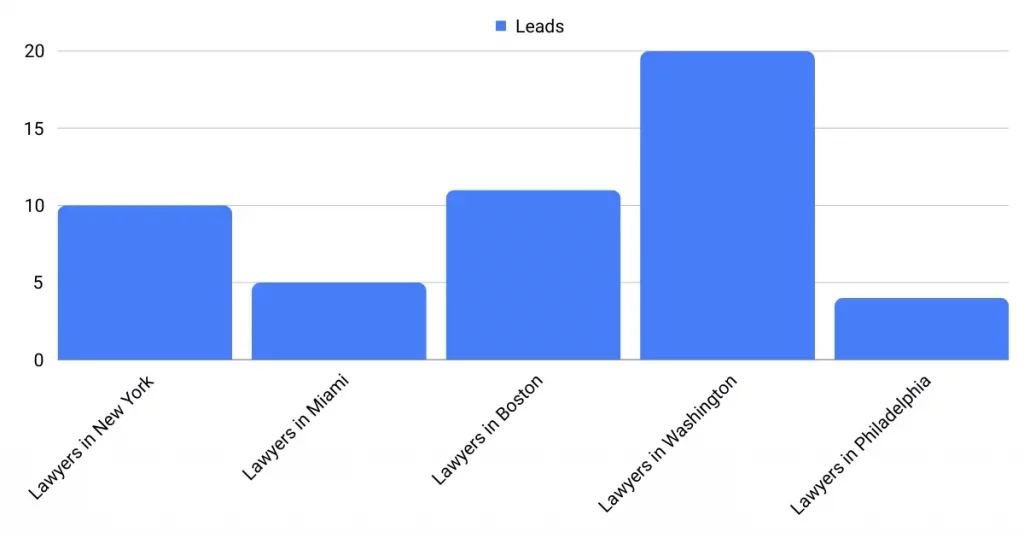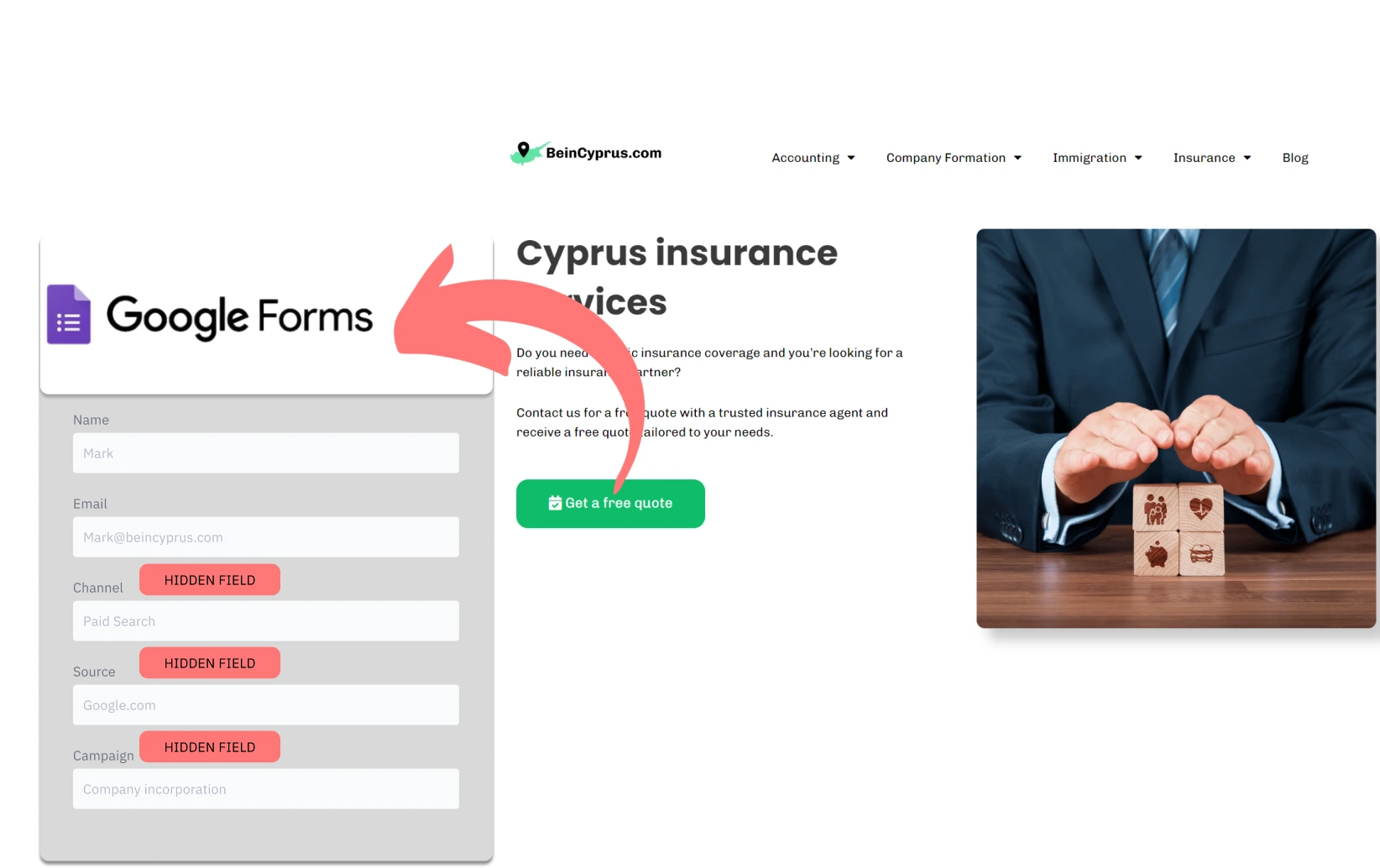Are you using Google Forms for lead collection but can’t pinpoint the source of your leads?
The guide below helps you capture the source of the leads within Google Forms.
Following this, you’ll be equipped to fine-tune your marketing strategies according to the channels that performed the best. Create in-depth reports that segment your leads by their channel, source, campaign, and beyond.
Let’s explore deeper into how this can be achieved.
How to track the source of lead in Google Forms
1. How LeadSources collects the lead source data
When a visitor lands on your website, their browser collects information about their journey to drive traffic to your website and boost lead generation:
- where they came from
- their first landing page
- the search terms that led them to you, etc.
LeadSources.io automatically tracks this data and stores it within your form as hidden fields.
As visitors complete your Google Forms form, providing their name, email, and other info in the visible fields, LeadSources.io simultaneously adds lead source details (channel, source, etc.) into Google Forms’ hidden fields.
Once the form is submitted, the lead source data is bundled together with the user’s responses and stored within Google Forms submission logs. This gives you a complete picture of each lead’s source, available directly within a single Google Forms entry.
2. How LeadSources passes the lead source data into Google Forms
Start by creating a LeadSources.io account. Add the script provided to your website. Clear instructions are provided to guide you through the process.
Next, add the hidden fields to your Google Forms. Don’t worry, it’s quick and simple.
Now for the magic: when visitors fill out a form on your website, LeadSources.io automatically fills those hidden fields with valuable lead source details (wherever the data is available):
- Channel
- Source
- Campaign
- Term
- Content
- Landing page
- Landing page subfolder
The moment that form is submitted, the lead source information captured in the hidden fields is transferred directly to Google Forms. You’ll find it stored right alongside the lead’s name, email, and other details within Google Forms submission logs.
How to analyze the lead source data
What data is tracked in Google Forms?
LeadSources.io enables you to track 7 distinct types of data for each lead, outlined as follows:
- Channel: Classifies the type of traffic. LeadSources delineates your leads across ten varied channels, including Paid Search, Organic Search, Email Marketing, Paid Social, Organic Social, Referral, Direct Traffic, Affiliates, Display Advertising, and Various UTM-tagged campaigns.
- Source: Identifies the precise platform or source that directed visitors to your website. For example, in the context of “Organic Social,” sources could encompass platforms such as Facebook, Instagram, etc.
- Campaign: Specifies the exact name of your marketing campaign. If you are running multiple campaigns via Google Ads, you can ascertain which specific campaign is responsible for attracting your leads.
- Term: Highlights the keyword targeted by a particular campaign. For instance, should you deploy a Google Ads campaign named “Search campaign for corporate lawyers,” LeadSources will categorize your leads based on the keyword targeted, like “Corporate lawyer in New York,” “Corporate lawyer in Miami,” and so forth.
- Content: Details the specific element of your advertisement that was clicked on by the viewer.
- Landing Page: The web address of the landing page where the lead first landed. Examples include domain.com/services/corporate-lawyer-miami.
- Landing Page Subfolder: Isolates the subfolder within the landing page’s URL for enhanced granularity in tracking. For example, if a visitor lands on domain.com/services/corporate-lawyer-miami, it is the “services” subfolder that is specifically tracked.
How to create performance reports?
Leads source reports
Unlock deeper insights into the origins of your leads with reporting.

Start by identifying the most effective channels for lead generation by organizing your leads based on Channel, as illustrated:
To further refine your lead data analysis, concentrate on a specific channel, like Paid Search, and analyze your Google Ads leads by campaign. This approach helps pinpoint which campaign is making the most significant contribution to your pool of leads.
For a detailed evaluation of a campaign’s success, consider generating reports such as “Total leads by keyword” and “Total leads by ad” to delve deeper into the effectiveness of your lead generation efforts:

Sales source reports
You’ve done the hard work of figuring out which ads and keywords are bringing in those leads through Google Forms. But now comes the truly important question: are those leads turning into paying customers?
To answer that you’ll want to connect your Google Forms submissions to a CRM system such as GoHighLevel (try it for free here). This enables powerful analytics that reveal the true sales impact of your lead generation efforts.
Consider this scenario:
| Channels | Search Paid | Social Paid |
| Leads | 50 | 75 |
| Sales | 5 | 6 |
| Average order value | $150 | $100 |
| Revenue | $750 | $600 |
You’ve been running marketing campaigns across Google and Facebook. Your initial look at “Leads by Channel” through Google Forms reveals that Paid Social campaigns seem to be bringing in more leads than Paid Search.
However, after tracking the conversion rates of these leads into paying customers over time, a surprising picture emerges. Paid Search, while generating fewer leads overall, turns out to be more effective at driving revenue. This powerful insight leads you to make a strategic decision: increase your Paid Search budget to capitalize on its efficiency.

